If this message is not displayed correctly, you can click here to view it in your web browser.

Sonus
Agency for Early Music
Zweierweg 35c - D-97074 Würzburg - +49 931 714 23 - info@sonus-alte-musik.de - www.sonus-alte-musik.de
Ensemble Danguy, Tobie Miller, and the Hurdy-Gurdy
Programs for Concerts in 2023-25
Prologue: The Hurdy-Gurdy — THE Fashionable Instrument of the 18th Century in France
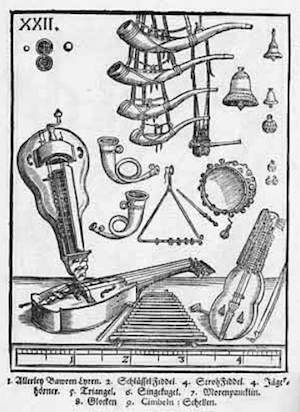 We all know the stories of nobles dressed as shepherds and shepherdesses who frolicked through magnificent parks in 18th century France, following the trend that emerged around 1700 in the upper class to imitate the life of the rural population (according to highly idealized notions). We all know the stories of nobles dressed as shepherds and shepherdesses who frolicked through magnificent parks in 18th century France, following the trend that emerged around 1700 in the upper class to imitate the life of the rural population (according to highly idealized notions).
In splendid palaces, stylized village music was now danced to, and instruments were played that had their origins in folk music but soon had little in common with these original models. One example is the hurdy-gurdy: originally a typical beggar's instrument, it suddenly became one of the most popular instruments among the upper classes, richly adorned and technically enhanced by courtly instrument makers.
In the brief period of its heyday (ca. 1720-1760), the hurdy-gurdy, known as the »vielle à roue«, inspired more magnificent and often highly virtuosic compositions than, for example, the cello or oboe. And although the story of the baroque hurdy-gurdy unfolded within a few decades, the instrument continued to be played in many places until at least the end of the century. Numerous portraits of young beauties gracefully playing the wheel fiddle still demonstrate today the passion with which the ladies of the aristocracy embraced this instrument.
Accordingly, the repertoire for the hurdy-gurdy soon rivaled in quantity and quality the music written for the violin, flute, and harpsichord. Alongside famous hurdy-gurdy enthusiasts such as Marie Leczinska, wife of Louis XV, or Marie Antoinette, the names of composers like »the illustrious Danguy«, François Boüin, Jean-Baptiste Dupuits, or Nicolas Chédeville were on everyone's lips.
In modern times, this extraordinary period in music history is almost forgotten, partly because there are only a handful of instrumental virtuosos worldwide who are capable of playing the works composed in the 18th century. Tobie Miller is one of them, and with her Ensemble Danguy, she has gathered a group of musicians who provide her with highly skilled support.
So read through the following programs and look forward to an evening of concerts filled with unusual sounds - sounds that were ubiquitous in the French upper class 300 years ago and still captivate audiences today!
Here you can watch Ensemble Danguy's playlist on our YouTube channel.
Here you will find more sound examples on our website.
La Belle Vielleuse - The Beautiful Hurdy-Gurdy Player
Virtuosic repertoire of the 18th century for hurdy-gurdy
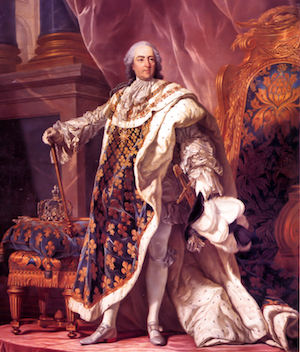 The vielle (hurdy-gurdy) reached the height of its popularity in France in the mid-18th century, and more than 200 works were composed for it between 1720 and 1760: On the one hand, simpler music that aims to evoke the idealized image of mythological-Arcadian peasants, village festivals, and rural joys, and on the other hand, more complex music written in the style of chamber music for other instruments of the time. The vielle (hurdy-gurdy) reached the height of its popularity in France in the mid-18th century, and more than 200 works were composed for it between 1720 and 1760: On the one hand, simpler music that aims to evoke the idealized image of mythological-Arcadian peasants, village festivals, and rural joys, and on the other hand, more complex music written in the style of chamber music for other instruments of the time.
This program, named after Michel Corrette's hurdy-gurdy school from 1783, consists — apart from Corrette's variations on La Furstemberg — of music from the second category, that is, music composed by or for the professional virtuosos of that time, including one of the most challenging sonatas ever created for this instrument by Jean-Baptiste Dupuits, perhaps the most experimental and provocative hurdy-gurdy composer of all time.
In addition to Dupuits' music, this program features sonatas, variations, cantatas, and character pieces by other composers known for their hurdy-gurdy repertoire, such as Charles Bâton, M. Ravet, Jean-Baptiste Dupuits, Jean-Baptiste Sénaille, as well as two of the great masters of the era, Marin Marais and François Couperin.
Ensemble Danguy
Tobie Miller - Baroque hurdy-gurdy, musical direction
Ellie Nimeroski - Baroque violin
Caroline Ritchie - Viola da gamba
Nadja Lesaulnier - Harpsichord
Esteban La Rotta - Theorbo
Price:
With five musicians: 4.500 €, plus travel and accommodation
With three musicians (hurdy-gurdy, viola da gamba, harpsichord): 3.000 €, plus travel and accommodation
Please feel free to contact us for information about possible additional concerts that can reduce rehearsal and travel costs.
Here you can find a video of the CD with this program on our YouTube channel.
The Vivaldi - Conspiracy
»Le Printems, ou Les Saisons Amusantes«: Vivaldi and/or Chédeville
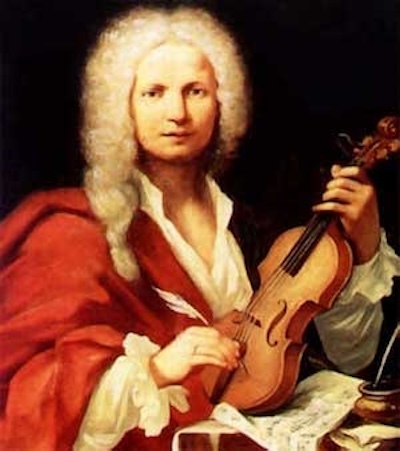 Antonio Vivaldi's Le Quattro Stagioni (The Four Seasons) are among the most famous works in the classical repertoire today and undoubtedly the best-known compositions of his Opus 8, Il Cimento dell'Armonia e dell'Inventione. The four concertos enjoyed enormous success in the decade following their publication and were well received throughout Europe. They were also performed at the »Concerts Spirituels« in Paris and at the court of Louis XV in Versailles after Vivaldi composed a cantata for Louis' wedding to Maria Leczinska. Antonio Vivaldi's Le Quattro Stagioni (The Four Seasons) are among the most famous works in the classical repertoire today and undoubtedly the best-known compositions of his Opus 8, Il Cimento dell'Armonia e dell'Inventione. The four concertos enjoyed enormous success in the decade following their publication and were well received throughout Europe. They were also performed at the »Concerts Spirituels« in Paris and at the court of Louis XV in Versailles after Vivaldi composed a cantata for Louis' wedding to Maria Leczinska.
This fact, as well as the generally positive reception of Vivaldi's compositions in France, likely inspired the French court musician Nicolas Chédeville to make transcriptions of various works from Vivaldi's Op. 8 and other Italian pieces, which he published in 1739 under the privilege: the six concertos contained in the collection Le Printems ou les saisons amusantes, Concertos d'A. Vivaldi mis pour les musettes et vielles, which are performed in this program.
Interestingly, Chédeville did not simply adopt Vivaldi's sequence of movements but happily varied it. For example, in the summer, he incorporated movements from Op. 8 No. 12 and No. 10 (La cacia) before proceeding to autumn and winter, and in between, he included the harvest (La Moisson), Les Plaisirs de la St Martin, and so on.
In contrast to the transcriptions in the Saisons Amusantes, Nicolas Chédeville boldly published his six sonatas Il Pastor Fido under Vivaldi's name, and indeed, until recently, they were regarded as original works by the Venetian composer. Whether Chédeville had some kind of musical farce in mind or simply speculatively sought further dissemination and financial gain by presenting his own work as Vivaldi's, we will probably never know. In any case, the six sonatas are composed in the Italian style and intended for musette, vielle, flute, oboe, or violin with continuo.
In this program, you will hear the fourth sonata, which stands out for its cheerfulness as well as its virtuosity.
The only original Vivaldi piece that is performed in this Vivaldi conspiracy is the opening trio sonata from his Op. 1 for two violins and continuo in G minor. Published in Chédeville's birth year of 1705, this is a younger, classical Vivaldi whose writing style was still heavily influenced by Arcangelo Corelli.
But can you distinguish Vivaldi's music from Chédeville's, where even the experts were deceived for centuries? Can you hear where Chédeville quotes, arranges, or composes himself?
Probably not!
So, in this program, look forward not only to Vivaldi's wonderful music in an entirely new sonority but also to some completely unknown pieces that possess similar earworm potential!
Ensemble Danguy
Tobie Miller - Baroque hurdy-gurdy, musical direction
Ellie Nimeroski, Amrai Shawn Grosse - Baroque violin
Caroline Ritchie - Baroque cello
Nadja Lesaulnier - Harpsichord
Sam Chapman - Theorbo
Nora Hansen - Bassoon
Price:
6.400 €, plus travel and accommodation
Contact us for possible follow-up dates!
Get an impression of Vivaldi's L'Automne in Chédeville's transcription on our YouTube channel.
Les Muses
Duos for vielle and violin
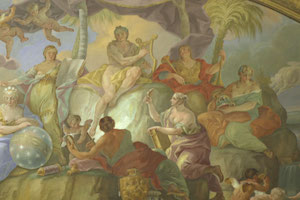 Vielle and violin: an unlikely marriage of two instruments which are incredibly similar, and yet quite different. While one is bowed with a wheel, and the strings are stopped by wooden keys and tangents, the other is equipped with a more usual bow of wood and horsehair, the strings stopped directly by the fingers of the musician. The mechanics of one instrument confront the relative simplicity of the other, until they are reduced to their common essence: gut strings meet a rosined bow, sound and vibrations. Vielle and violin: an unlikely marriage of two instruments which are incredibly similar, and yet quite different. While one is bowed with a wheel, and the strings are stopped by wooden keys and tangents, the other is equipped with a more usual bow of wood and horsehair, the strings stopped directly by the fingers of the musician. The mechanics of one instrument confront the relative simplicity of the other, until they are reduced to their common essence: gut strings meet a rosined bow, sound and vibrations.
The combined sound of these two instruments, evoking an archaic sonorous landscape while confronting the most modern writing of mid-18th century France, was beloved by composers such as J.B. De Boismortier, M. Ravet, M. Prudent, Louis LeMaire, M. Piffet, and Philibert de LaVigne.
In this programme, you will hear all the nuances of the combination of these two instruments sans basse. Your ears will be treated to works which range from virtuosic duo sonatas for vielle and violin, to sophisticated suites where the violin moves seamlessly between the role of the bass instrument, to evoking the more pastoral qualities of the vielle with chordal writing and drones, as well as rousing contredanses, popular melodies and lighter works in the style of pastoral imitation which was all the rage among the French nobility and upper classes of the time.
Tobie Miller and Ellie Nimersoki (1st violin of Ensemble Danguy) met while studying early music at McGill University (Montreal), and have been playing together ever since. Their 25 years of musical complicity is showcased in this duo programme.
Tobie Miller - Baroque vielle
Ellie Nimeroski - Baroque violin
Price:
2.400 €, plus travel and accommodation
Contact us for possible follow-up dates!
Johann Sebastian Bach and the Hurdy-gurdy
Tobie Miller plays Bach
 »J.S. Bach's music was like a leitmotif in my musical development«, says Tobie Miller when asked about her relationship with the great Thomaskantor. She grew up with his music, heard and played it in various forms and variations, both in the original version and in adaptations. »Therefore, it was quite natural for me«, she continues, »to arrange some of his most beautiful solo works for my instrument. We will probably never know if Bach himself was familiar with the hurdy-gurdy. However, during his lifetime, it was a favorite instrument of the French upper class, and the large number of compositions for hurdy-gurdy attests to its popularity. This fame could have reached Central Germany, and Bach could have heard of it«. »J.S. Bach's music was like a leitmotif in my musical development«, says Tobie Miller when asked about her relationship with the great Thomaskantor. She grew up with his music, heard and played it in various forms and variations, both in the original version and in adaptations. »Therefore, it was quite natural for me«, she continues, »to arrange some of his most beautiful solo works for my instrument. We will probably never know if Bach himself was familiar with the hurdy-gurdy. However, during his lifetime, it was a favorite instrument of the French upper class, and the large number of compositions for hurdy-gurdy attests to its popularity. This fame could have reached Central Germany, and Bach could have heard of it«.
And even though she has not found any historical evidence that Bach's music was ever played on her instrument, Tobie Miller could not pass by his works. And so, in good Baroque tradition, the hurdy-gurdy virtuoso transcribed Partita III for Violin, BWV 1006, as well as Cello Suites I and II (BWV 1007 and 1008) for the hurdy-gurdy — and in the end, she was surprised by how well it worked.
Emphasizing this, she says: »The presented transcriptions aim to faithfully reproduce Bach's compositions. The main changes include changes in registers—when a section exceeds the instrument's range — or simplifications of short polyphonic sections, and broken chords instead of double stops, as the hurdy-gurdy can only play one note at a time. As a musician specialized in performing Early Music on authentic instruments in historical performance practice, I use historical fingerings and techniques whenever possible for this recording.«
In this program, you can discover Bach's music from a completely new perspective — but definitely one that should not be overlooked!
Tobie Miller - Baroque tenor hurdy-gurdy
Price:
1.800 €, plus travel and accommodation
Listen to Tobie Miller's fascinating transcription and interpretation of the Prelude from the Partita in E Major on our YouTube channel.
Noël, noël!
French Christmas during the time of Louis XV.
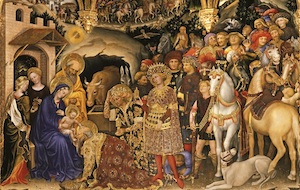 The quantity and quality of French Baroque Christmas songs (Noëls) demonstrate the significance of this tradition in the country in earlier centuries. In fact, many of these songs are still sung and played today, retaining their appeal and relevance. The quantity and quality of French Baroque Christmas songs (Noëls) demonstrate the significance of this tradition in the country in earlier centuries. In fact, many of these songs are still sung and played today, retaining their appeal and relevance.
In the 18th century, it was common practice to incorporate well-known and beloved melodies into larger compositions. Numerous works were created that quote and include famous and beloved Christmas songs, arranged for a concert, trio sonata, or even in duet form for various instruments, including the Baroque hurdy-gurdy.
Here, you can experience a lively and enchanting program featuring precisely such beloved Christmas songs from 18th-century France. The Ensemble Danguy, under the direction of Tobie Miller, presents them in their original versions as well as in arrangements by composers such as Michel Corrette, Michel de Lalande, and Nicolas Chédeville. The program is complemented by additional works that evoke pastoral landscapes and the winter season.
Ensemble Danguy
Annie Dufresne - Soprano
Tobie Miller - Baroque hurdy-gurdy, musical direction
Alice Humbert - Baroque hurdy-gurdy
Ellie Nimeroski, Natalie Carducci - Baroque violin
Caroline Ritchie - Viola da gamba
Nadja Lesaulnier - Harpsichord
Price:
6.400 €, plus travel and accommodation
Feel free to contact us for information on possible additional concerts that may reduce rehearsal and travel expenses.
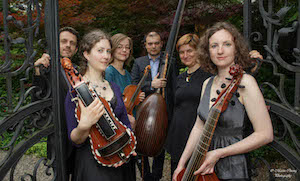 The Ensemble Danguy, based in Switzerland and probably unique worldwide in terms of its lineup and programming, specializes in the diverse repertoire for the hurdy-gurdy (also known as vielle à roue, symphonie, organistrum, or ysis) in its numerous historical forms. The group borrows its name from the most famous hurdy-gurdy virtuoso of the 18th century, known simply as the »illustrious Danguy«. The Ensemble Danguy, based in Switzerland and probably unique worldwide in terms of its lineup and programming, specializes in the diverse repertoire for the hurdy-gurdy (also known as vielle à roue, symphonie, organistrum, or ysis) in its numerous historical forms. The group borrows its name from the most famous hurdy-gurdy virtuoso of the 18th century, known simply as the »illustrious Danguy«.
The ensemble is led by hurdy-gurdy player Tobie Miller, who was born in Canada and is one of the few virtuosos on this instrument who came to it through early music.
In May 2017, the group released its first CD, La Belle Vielleuse, on the Ricercar label, featuring sonatas and cantatas from the 18th century, which received great curiosity and enthusiasm from audiences and critics. In 2018, they followed up with The Vivaldi Conspiracy, which was equally successful.
Invitations to numerous festivals and concerts at home and abroad attest to the tremendous fascination that this almost forgotten music for the hurdy-gurdy continues to exert on audiences, as well as the great curiosity that organizers and concertgoers have for it.
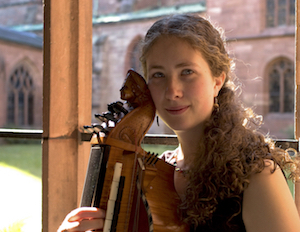 Hurdy-gurdy player, recorder player, and singer Tobie Miller grew up in Canada in a family of classical musicians and insisted on learning the violin at the tender age of three. Throughout her childhood, this instrument was complemented by piano and flute, and Tobie was encouraged to pursue a career in a symphony orchestra. Hurdy-gurdy player, recorder player, and singer Tobie Miller grew up in Canada in a family of classical musicians and insisted on learning the violin at the tender age of three. Throughout her childhood, this instrument was complemented by piano and flute, and Tobie was encouraged to pursue a career in a symphony orchestra.
Fortunately for the hurdy-gurdy world, youthful rebellion led her in a different direction, namely that of early music, initially in the form of the recorder and singing. During her studies at McGill University in Montreal, she happened to come across a hurdy-gurdy and it was love at first sight.
She found the sound magical, and she knew immediately: This instrument — or none!
On closer inspection, however, Tobie realized that there were no teachers for playing the historical hurdy-gurdy with its Baroque repertoire in our time; instruction was only available for traditional music and modern hurdy-gurdy playing. But there were the historical textbooks from the 18th century, and with their help, Tobie Miller eventually managed to acquire the necessary technique to play the demanding music written for her instrument, especially in 18th-century France.
Her love affair with the hurdy-gurdy ultimately led her to Switzerland, where she immersed herself in early music at the Schola Cantorum Basiliensis and also received private lessons from Jean-Christophe Maillard, Hopkinson Smith, and Valentin Clastrier. During her studies, she was also invited to organize an international symposium on the Baroque hurdy-gurdy at the Schola and teach within that framework.
Over the past 20 years, Tobie Miller has established herself as one of the world's very few specialists in historical hurdy-gurdy playing, with a repertoire ranging from the Middle Ages and Baroque to Classical and contemporary and even traditional music. She is particularly fascinated by the French repertoire composed specifically for her instrument in the Baroque era, but she also loves playing the music that marked the hurdy-gurdy's first appearances in medieval and Renaissance music history — always on the appropriate instrument and in the historically appropriate tuning system. In 2016, she founded her own ensemble, Danguy, dedicated to the rarely performed repertoire for her instrument.
She also performs with various other ensembles and Baroque orchestras such as Per-Sonat, Les Musiciens de Saint Julien, and Ensemble Baroque de Limoges, and is invited by conductors like Jordi Savall, Christophe Coin, and Wieland Kuijken for projects. In addition, she frequently teaches at workshops and festivals, as well as at the Schola Cantorum.
Tobie is still deeply in love with the wonderful, overtone-rich sound of her instrument, which always touches the listeners so deeply. And so, her mission remains to make this special instrument known to as many people as possible and to ignite enthusiasm for its fantastic repertoire among them.
Sonus - Agency for Early Music
Direction: Andrea Braun
Zweierweg 35c
97074 Würzburg
Deutschland
Fon: +49 931 714 23
Mail: info@sonus-alte-musik.de
www.sonus-alte-musik.de
If you want to unsubscribe from this newsletter, please click here.
|


 We all know the stories of nobles dressed as shepherds and shepherdesses who frolicked through magnificent parks in 18th century France, following the trend that emerged around 1700 in the upper class to imitate the life of the rural population (according to highly idealized notions).
We all know the stories of nobles dressed as shepherds and shepherdesses who frolicked through magnificent parks in 18th century France, following the trend that emerged around 1700 in the upper class to imitate the life of the rural population (according to highly idealized notions).
 The vielle (hurdy-gurdy) reached the height of its popularity in France in the mid-18th century, and more than 200 works were composed for it between 1720 and 1760: On the one hand, simpler music that aims to evoke the idealized image of mythological-Arcadian peasants, village festivals, and rural joys, and on the other hand, more complex music written in the style of chamber music for other instruments of the time.
The vielle (hurdy-gurdy) reached the height of its popularity in France in the mid-18th century, and more than 200 works were composed for it between 1720 and 1760: On the one hand, simpler music that aims to evoke the idealized image of mythological-Arcadian peasants, village festivals, and rural joys, and on the other hand, more complex music written in the style of chamber music for other instruments of the time.
 Antonio Vivaldi's Le Quattro Stagioni (The Four Seasons) are among the most famous works in the classical repertoire today and undoubtedly the best-known compositions of his Opus 8, Il Cimento dell'Armonia e dell'Inventione. The four concertos enjoyed enormous success in the decade following their publication and were well received throughout Europe. They were also performed at the »Concerts Spirituels« in Paris and at the court of Louis XV in Versailles after Vivaldi composed a cantata for Louis' wedding to Maria Leczinska.
Antonio Vivaldi's Le Quattro Stagioni (The Four Seasons) are among the most famous works in the classical repertoire today and undoubtedly the best-known compositions of his Opus 8, Il Cimento dell'Armonia e dell'Inventione. The four concertos enjoyed enormous success in the decade following their publication and were well received throughout Europe. They were also performed at the »Concerts Spirituels« in Paris and at the court of Louis XV in Versailles after Vivaldi composed a cantata for Louis' wedding to Maria Leczinska.
 Vielle and violin: an unlikely marriage of two instruments which are incredibly similar, and yet quite different. While one is bowed with a wheel, and the strings are stopped by wooden keys and tangents, the other is equipped with a more usual bow of wood and horsehair, the strings stopped directly by the fingers of the musician. The mechanics of one instrument confront the relative simplicity of the other, until they are reduced to their common essence: gut strings meet a rosined bow, sound and vibrations.
Vielle and violin: an unlikely marriage of two instruments which are incredibly similar, and yet quite different. While one is bowed with a wheel, and the strings are stopped by wooden keys and tangents, the other is equipped with a more usual bow of wood and horsehair, the strings stopped directly by the fingers of the musician. The mechanics of one instrument confront the relative simplicity of the other, until they are reduced to their common essence: gut strings meet a rosined bow, sound and vibrations.
 »J.S. Bach's music was like a leitmotif in my musical development«, says Tobie Miller when asked about her relationship with the great Thomaskantor. She grew up with his music, heard and played it in various forms and variations, both in the original version and in adaptations. »Therefore, it was quite natural for me«, she continues, »to arrange some of his most beautiful solo works for my instrument. We will probably never know if Bach himself was familiar with the hurdy-gurdy. However, during his lifetime, it was a favorite instrument of the French upper class, and the large number of compositions for hurdy-gurdy attests to its popularity. This fame could have reached Central Germany, and Bach could have heard of it«.
»J.S. Bach's music was like a leitmotif in my musical development«, says Tobie Miller when asked about her relationship with the great Thomaskantor. She grew up with his music, heard and played it in various forms and variations, both in the original version and in adaptations. »Therefore, it was quite natural for me«, she continues, »to arrange some of his most beautiful solo works for my instrument. We will probably never know if Bach himself was familiar with the hurdy-gurdy. However, during his lifetime, it was a favorite instrument of the French upper class, and the large number of compositions for hurdy-gurdy attests to its popularity. This fame could have reached Central Germany, and Bach could have heard of it«.
 The quantity and quality of French Baroque Christmas songs (Noëls) demonstrate the significance of this tradition in the country in earlier centuries. In fact, many of these songs are still sung and played today, retaining their appeal and relevance.
The quantity and quality of French Baroque Christmas songs (Noëls) demonstrate the significance of this tradition in the country in earlier centuries. In fact, many of these songs are still sung and played today, retaining their appeal and relevance.
 The Ensemble Danguy, based in Switzerland and probably unique worldwide in terms of its lineup and programming, specializes in the diverse repertoire for the hurdy-gurdy (also known as vielle à roue, symphonie, organistrum, or ysis) in its numerous historical forms. The group borrows its name from the most famous hurdy-gurdy virtuoso of the 18th century, known simply as the »illustrious Danguy«.
The Ensemble Danguy, based in Switzerland and probably unique worldwide in terms of its lineup and programming, specializes in the diverse repertoire for the hurdy-gurdy (also known as vielle à roue, symphonie, organistrum, or ysis) in its numerous historical forms. The group borrows its name from the most famous hurdy-gurdy virtuoso of the 18th century, known simply as the »illustrious Danguy«.
 Hurdy-gurdy player, recorder player, and singer Tobie Miller grew up in Canada in a family of classical musicians and insisted on learning the violin at the tender age of three. Throughout her childhood, this instrument was complemented by piano and flute, and Tobie was encouraged to pursue a career in a symphony orchestra.
Hurdy-gurdy player, recorder player, and singer Tobie Miller grew up in Canada in a family of classical musicians and insisted on learning the violin at the tender age of three. Throughout her childhood, this instrument was complemented by piano and flute, and Tobie was encouraged to pursue a career in a symphony orchestra.